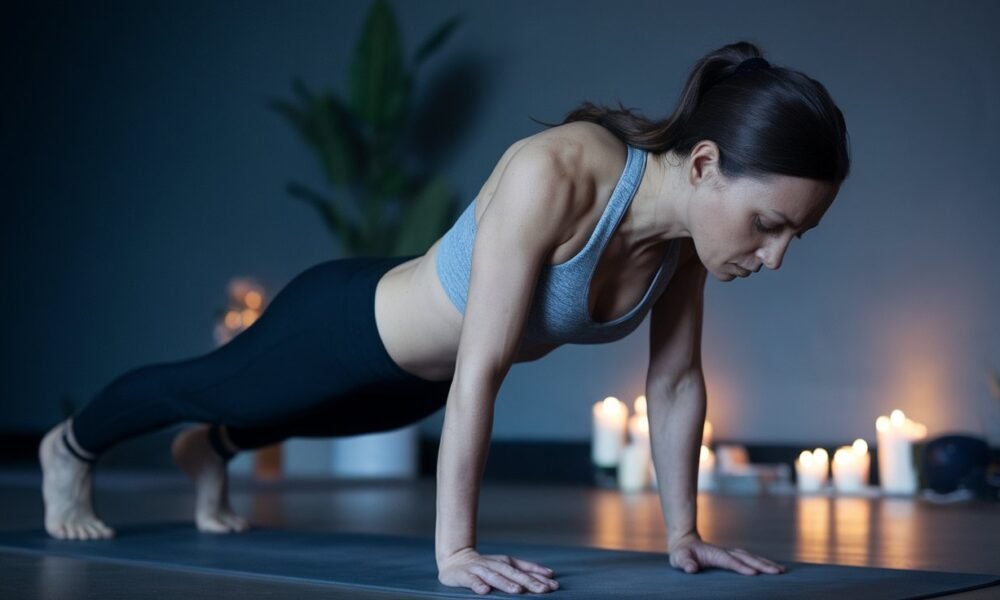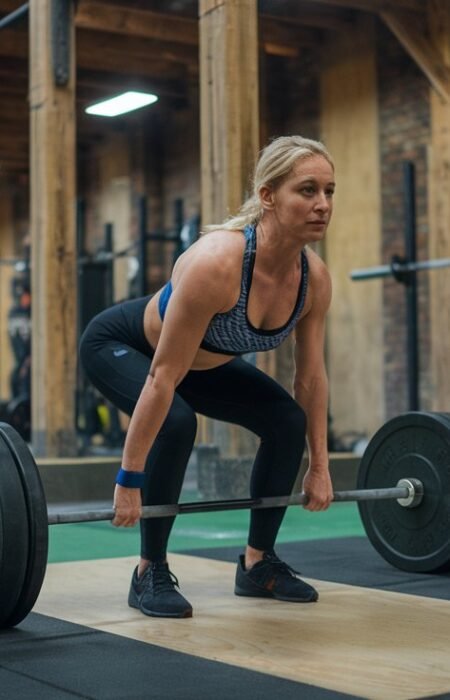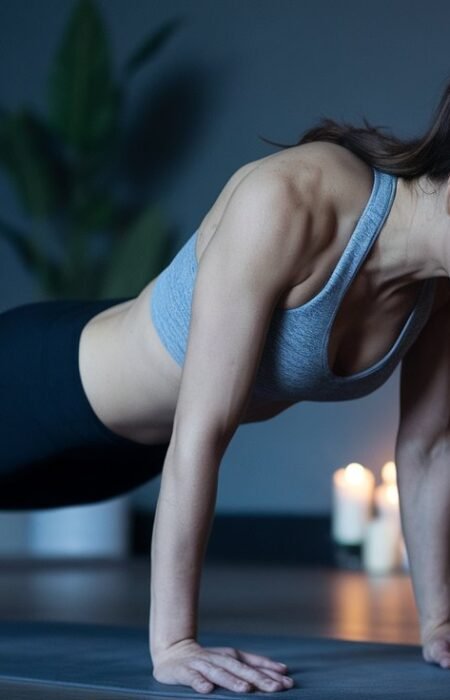At-Home Workouts That Actually Work (Even on Low-Energy Days)
We’ve all been there. The alarm buzzes, or you finally clock off work, and the mere thought of a workout feels like climbing Everest. Your energy reserves are scraping bottom, motivation is MIA, and the couch whispers sweet nothings. But what if you could move your body, boost your mood, and still respect your low-energy state? Forget grueling hour-long sessions; effective at-home workouts for low-energy days are about smart movement, not maximum exertion. Here’s your blueprint for moving when you really don’t feel like it:
The Low-Energy Workout Mindset Shift:
First, ditch the “all or nothing” mentality. Something is always better than nothing. On low-energy days:
- Redefine “Workout”: It’s not about crushing PRs. It’s about gentle movement, improving circulation, releasing tension, and boosting mood chemicals.
- Prioritize Consistency Over Intensity: Doing something regularly, even if small, builds habit and long-term results far better than sporadic intense bursts followed by burnout.
- Listen Intently: Honor your body. If something hurts (beyond normal muscle fatigue) or feels overwhelmingly wrong, stop. Low-energy doesn’t mean pushing through pain.
- Focus on Feel-Good Outcomes: Aim to feel better after than before – less stiff, less foggy, more relaxed, more energized (paradoxically!).

Your Low-Energy At-Home Toolkit: Principles & Practices
- The “Just Start” Rule (2-5 Minute Minimum):
- The Power: Committing to just 2-5 minutes removes the mental barrier. Often, starting is the hardest part, and once you begin, you might feel like doing more.
- The Practice: Set a timer. Choose one simple thing:
- March in place.
- Gentle cat-cow stretches on the floor.
- Put on one upbeat song and dance however you can.
- Do 5 sun salutations very slowly.
- Promise: You can stop when the timer goes off. Often, you won’t want to.
- Embrace the Micro-Workout (Snack-Sized Movement):
- The Power: Breaking activity into tiny chunks (5-10 minutes) spread throughout the day is less daunting and accumulates significant benefits. It fits seamlessly into busy or low-energy schedules.
- The Practice:
- Morning Wake-Up: 5 mins of gentle yoga or dynamic stretching (arm circles, leg swings, torso twists).
- Lunch Break: 7 mins of bodyweight squats, wall push-ups, and plank holds (modified on knees if needed).
- Afternoon Slump: 5 mins of brisk walking around your home/up & down stairs, or a quick dance break.
- Pre-Dinner: 5 mins of core work (bird-dogs, dead bugs, modified crunches).
- Wind-Down: 5-10 mins of restorative yoga or deep stretching before bed.
- Leverage Low-Impact, High-Reward Modalities:
- Yoga (Gentle/Restorative):
- Why it Works: Focuses on breath, gentle movement, stretching, and relaxation. Improves circulation, reduces stress hormones, eases aches. Requires minimal energy output.
- Low-Energy Focus: Focus on floor-based poses (child’s pose, cat-cow, seated twists, legs-up-the-wall). Hold poses longer. Use props (pillows, blankets). YouTube: Search “gentle yoga,” “restorative yoga,” “yoga for fatigue.”
- Bodyweight Strength (Focus on Form & Mind-Muscle Connection):
- Why it Works: Builds functional strength without equipment. Moving slowly and focusing on quality over quantity makes it manageable and effective even with low reps.
- Low-Energy Focus: Choose 3-4 exercises. Perform slowly and deliberately. Aim for 8-12 reps, 1-2 sets. Rest as needed.
- Examples: Wall push-ups, assisted squats (using a chair), glute bridges, bird-dogs, standing rows using a towel on a doorknob, modified planks (knees down).
- Stretching & Mobility:
- Why it Works: Releases muscle tension, improves joint range of motion, enhances circulation, feels instantly gratifying. Requires minimal cardiovascular effort.
- Low-Energy Focus: Full-body flow or target specific tight areas (neck/shoulders, hips, lower back). Hold each stretch for 20-30 seconds, breathe deeply. Foam rolling (gentle!) is great too.
- Breathwork:
- Why it Works: Directly impacts your nervous system. Deep, diaphragmatic breathing calms stress (draining energy) and can actually increase oxygen uptake, providing a subtle energy lift.
- Low-Energy Focus: 5 minutes of focused breathing. Try box breathing (4s inhale, 4s hold, 4s exhale, 4s hold) or simple deep belly breaths.
- Yoga (Gentle/Restorative):
- The Magic of Momentum: Start Superslow, Progress Gradually:
- The Power: Beginning very slowly (e.g., marching in place at a snail’s pace) tricks your resistant brain. Gradually, almost imperceptibly, increase the pace or range of motion only if it feels okay. This builds momentum without triggering the “this is too hard” alarm.
- The Practice: Start a bodyweight squat barely moving down. Over 30 seconds, slowly deepen it only as much as feels accessible. Same for arm movements – start tiny, grow gradually.
- Modify, Modify, Modify (There’s NO Shame!):
- The Power: Doing any version of an exercise is infinitely better than skipping it because the “full” version feels impossible. Modifications make movement accessible and safe.
- The Practice:
- Push-ups: Wall, countertop, knees down.
- Squats: Chair-assisted (tap sit or hover), hold onto something, reduce depth.
- Plank: Knees down, elevate hands on a sturdy surface.
- Lunges: Hold onto a chair, reduce depth, step back instead of forward (less balance demand).
- Burpees (if you dare!): Step back/forward instead of jump, skip the push-up, skip the jump at the top.
- The “Tiny Triumph” Strategy: Focus on One Thing:
- The Power: On truly abysmal energy days, pick one simple movement goal. Achieving it feels like a win and maintains the habit thread.
- The Practice: “Today, I will do 10 mindful glute bridges.” Or, “Today, I will hold downward dog for 5 deep breaths.” Or simply, “Today, I will stand up and stretch my arms overhead for 1 minute every hour.” Done. Victory.
Putting it Together: Sample Low-Energy At-Home Workouts
- The 5-Minute “Wake-Up the Body”:
- 1 min: Deep Belly Breathing standing or seated.
- 1 min: Gentle Neck Rolls & Shoulder Shrugs.
- 1 min: Slow Marching in Place, lifting knees gently.
- 1 min: Cat-Cow Stretch on hands and knees.
- 1 min: Child’s Pose (rest).
- The 10-Minute “De-Stress & De-Kink”:
- 2 mins: Seated or Standing Spinal Twists (gentle, with breath).
- 2 mins: Standing Forward Fold (bend knees generously, let head hang).
- 2 mins: Supine Figure-4 Stretch (lying on back, cross ankle over knee, pull thigh in).
- 2 mins: Supported Bridge (lift hips, maybe place block or pillow under sacrum, rest).
- 2 mins: Legs-Up-The-Wall pose (calming, drains fluid).
- The 15-Minute “Gentle Strength & Stretch”:
- 3 mins: Warm-up – Arm Circles, Torso Twists, Ankle Rolls.
- 3 mins: Wall Push-Ups (slow, 10-12 reps).
- 3 mins: Chair-Assisted Squats (slow, focus on form, 10-12 reps).
- 3 mins: Kneeling Plank Hold (focus on straight line, 20-30 seconds, rest, repeat).
- 3 mins: Supine Hamstring Stretch (lying on back, pull one leg gently towards chest, switch).
Remember:
- Hydrate: Even gentle movement needs hydration. Sip water.
- Environment: Put on comfortable clothes, clear a small space, maybe play calming or mildly upbeat music.
- Celebrate: Acknowledge that you moved despite feeling low energy. That’s a huge win! “I showed up for myself” is the ultimate success metric on these days.
Low-energy days are inevitable, but they don’t have to mean zero movement. By shifting your expectations, embracing micro-doses of activity, and choosing gentle, accessible modalities, you can maintain momentum, boost your mood, care for your body, and prove to yourself that you can show up, even when it’s hard. That consistency, built on self-compassion and smart strategies, is what delivers real, lasting results. Now, go conquer that couch – gently.









